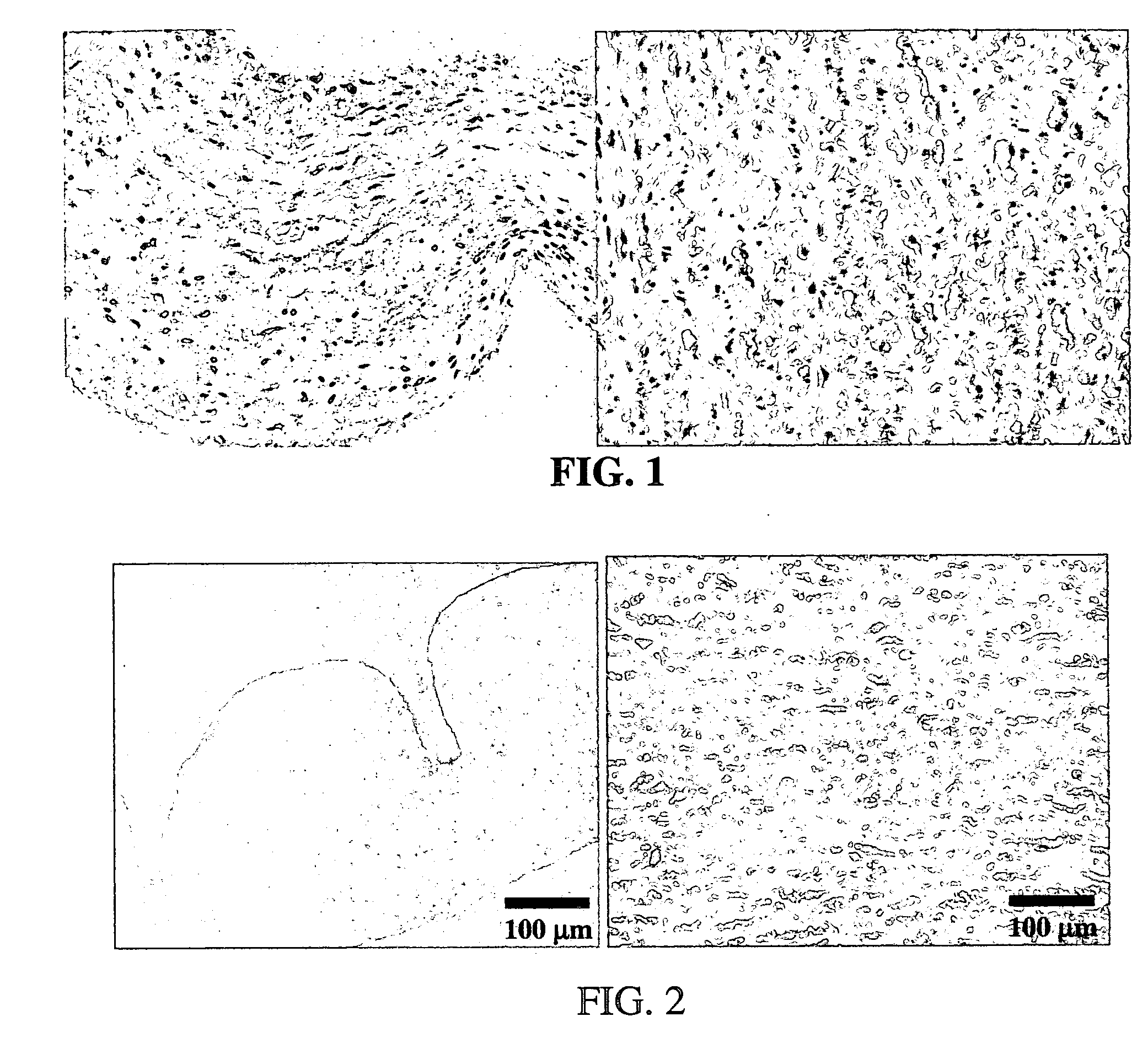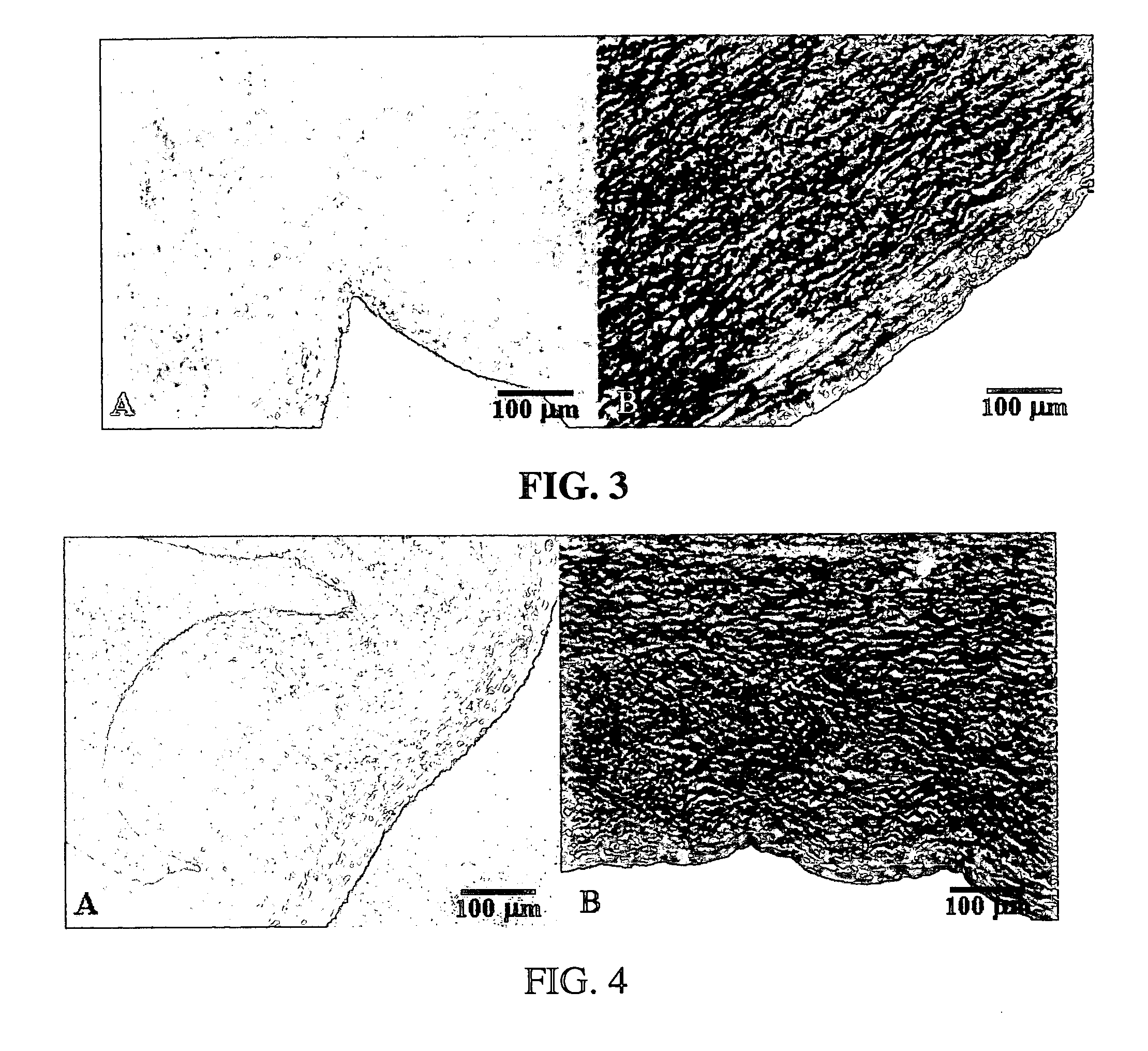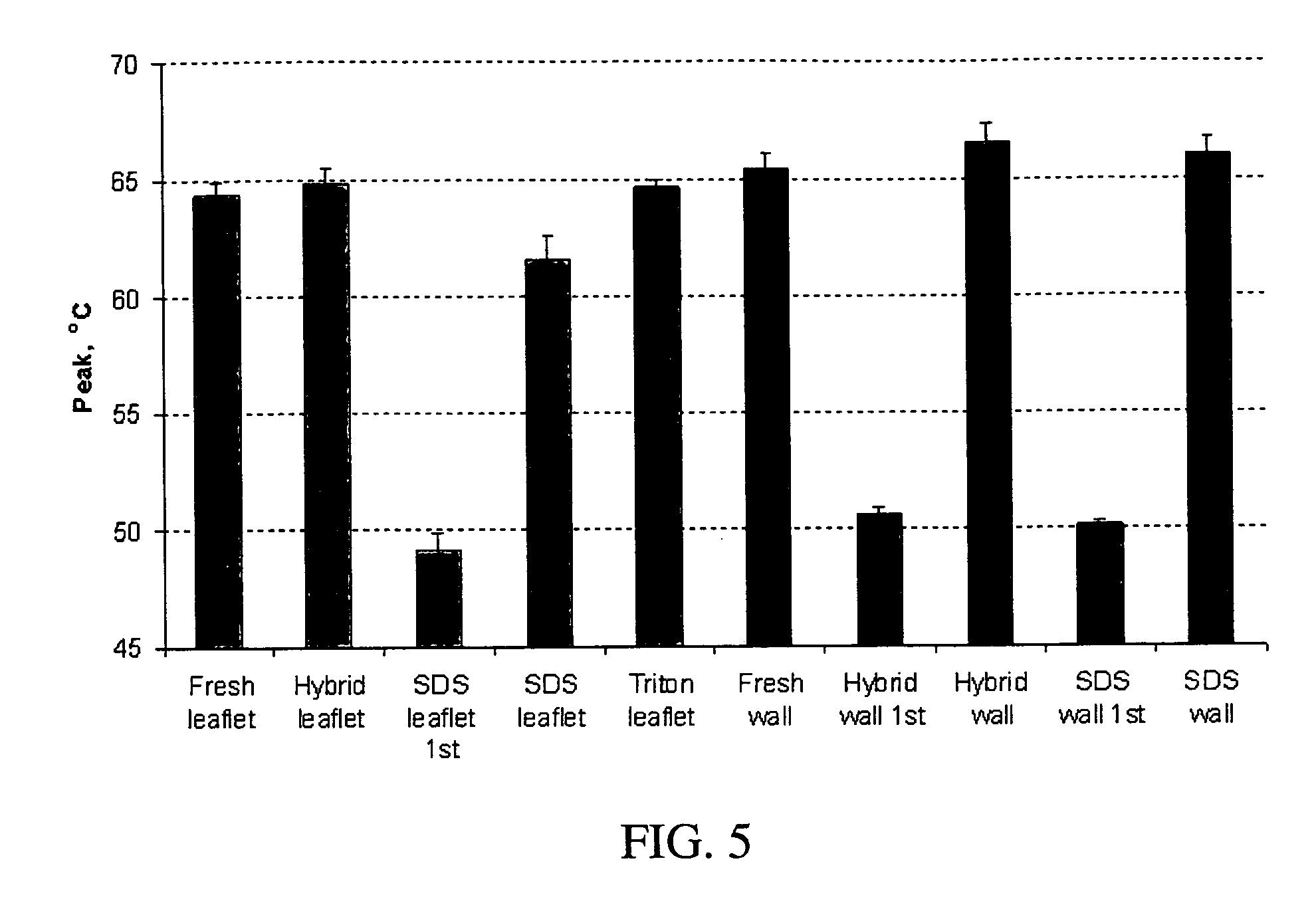Processes for removing cells and cell debris from tissue and tissue constructs used in transplantation and tissue reconstruction
a tissue and tissue technology, applied in the field of implantable medical prostheses, can solve the problems of mechanical devices, on the one hand, typically undergo catastrophic failure, prosthetic devices can fail,
- Summary
- Abstract
- Description
- Claims
- Application Information
AI Technical Summary
Benefits of technology
Problems solved by technology
Method used
Image
Examples
examples
[0059] In an exemplary embodiment of the invention, several types of tissue were evaluated; porcine aortic root tissue (PART) that has applications in heart valve replacement surgery, veins, facia, and pericardial tissue (PT), which can be used in either cardiovascular applications or as a general tissue support throughout the body.
Wash step
[0060] Porcine Aortic Root Tissue (PART) and Pericardial Tissue (PT) were brought into the lab and washed in a wash solution comprising: 0.3% Sodium chloride; 20 mM EDTA; protease inhibitor cocktail as previously described; and 0.05% sodium azide.
[0061] The tissue was dissected free of unwanted connective and adipose tissue and placed back in a fresh wash solution prior to washing. The wash step was carried out in 2-liter tissue culture bottles, placed on a roller apparatus designed to rotate the bottles at 60 RPM for 24 hours at room temperature. This process also assisted in the removal of unwanted tissue and debris from the tissue.
Decellul...
PUM
| Property | Measurement | Unit |
|---|---|---|
| thickness | aaaaa | aaaaa |
| time | aaaaa | aaaaa |
| weight percent | aaaaa | aaaaa |
Abstract
Description
Claims
Application Information
 Login to View More
Login to View More - R&D
- Intellectual Property
- Life Sciences
- Materials
- Tech Scout
- Unparalleled Data Quality
- Higher Quality Content
- 60% Fewer Hallucinations
Browse by: Latest US Patents, China's latest patents, Technical Efficacy Thesaurus, Application Domain, Technology Topic, Popular Technical Reports.
© 2025 PatSnap. All rights reserved.Legal|Privacy policy|Modern Slavery Act Transparency Statement|Sitemap|About US| Contact US: help@patsnap.com



